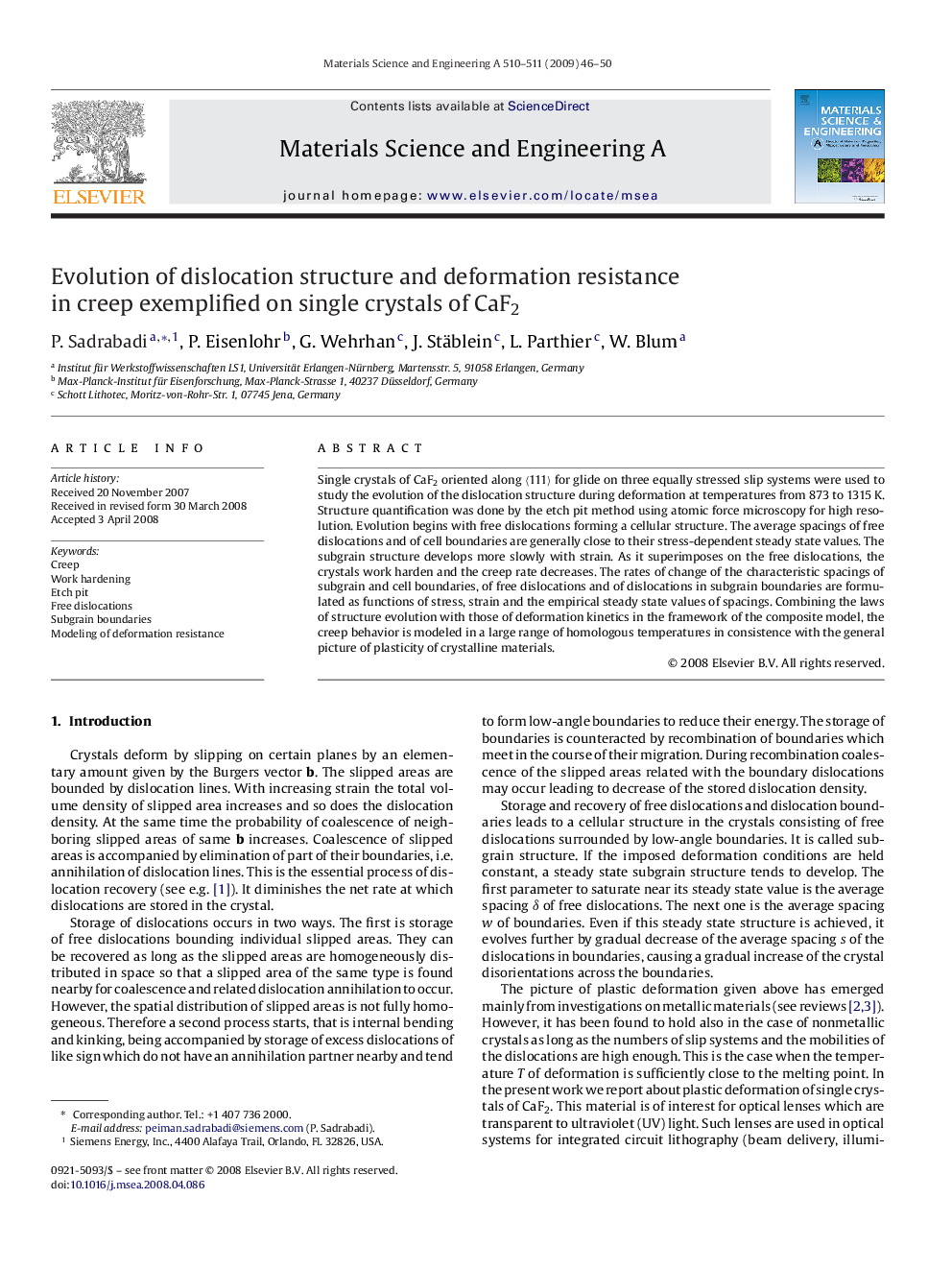| Article ID | Journal | Published Year | Pages | File Type |
|---|---|---|---|---|
| 1580732 | Materials Science and Engineering: A | 2009 | 5 Pages |
Single crystals of CaF2 oriented along 〈111〉〈111〉 for glide on three equally stressed slip systems were used to study the evolution of the dislocation structure during deformation at temperatures from 873 to 1315 K. Structure quantification was done by the etch pit method using atomic force microscopy for high resolution. Evolution begins with free dislocations forming a cellular structure. The average spacings of free dislocations and of cell boundaries are generally close to their stress-dependent steady state values. The subgrain structure develops more slowly with strain. As it superimposes on the free dislocations, the crystals work harden and the creep rate decreases. The rates of change of the characteristic spacings of subgrain and cell boundaries, of free dislocations and of dislocations in subgrain boundaries are formulated as functions of stress, strain and the empirical steady state values of spacings. Combining the laws of structure evolution with those of deformation kinetics in the framework of the composite model, the creep behavior is modeled in a large range of homologous temperatures in consistence with the general picture of plasticity of crystalline materials.
